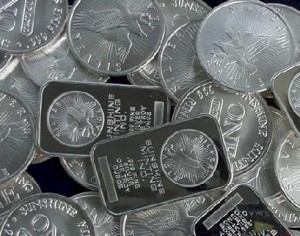Gold and silver moved modestly higher during day trading on Thursday thanks, in large part, to a boost from renewed safe-haven demand. Tensions in Ukraine are back on the front burner of the marketplace’s attention and even though things deescalated to some extent today, the entire situation remains extremely volatile. A few pieces of US economic data trickled in today but in the end it had little to no real affect on spot values as most economic data made public today was overshadowed by the situation in Ukraine.
Tensions Grow As Ukraine Struggles To Find Peace
Violence has raged for a fourth consecutive day this week as the Ukrainian military continues to face off against armed, pro-Russia militiamen. Having said that, however, Russian government officials recently made it clear that continued attacks on pro-Russians living in Ukraine will be interpreted as attacks on Russia itself. Out of fear of being attacked by a neighbor that is vastly superior to them militarily, Ukraine has since pulled back a number of its troops and is mulling over other ways to oust the armed militiamen.
The most recent batch of violence between rebels and the military this week is coming in the wake of a conference that was held last week which seemed to paint a picture of the United States and Russia cooperating in order to bring about a peaceful solution to the ongoing violence.
While tensions and thus safe-haven demand have been growing over the past few weeks, safe-haven demand alone has not been enough to restore spot gold and silver above key resistance levels. Today, however, rallying stocks took a brief recess and as a result limited the selling pressure being felt by gold and silver. It is unlikely that stocks will back off completely as we bring this week to a close, but today’s slip up in US equities has given precious metals investors a glimmer of hope with regard to finishing the week on a positive note.
President of the ECB bank, Mario Draghi, spoke in the early morning hours of Thursday and hinted that the ECB may shortly ease monetary policy in the region in an attempt to stave off growing deflationary pressures. The last annual inflation rate reading saw the EU at just .5%, more than 1% below the 2% target set forth by Europe’s major banking institution. Once monetary stimulus actually takes place in Europe it will be interesting to see what kind of affect it has on the marketplace as a whole.

